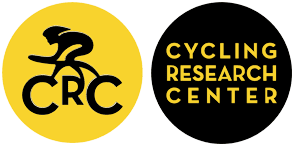The effects of block training periodization on pacing during 20-km cycling time trial
Abstract
Background: Several studies have been proposed to accumulate consecutive days (5 to 14 days) of high intensity interval training (HIT) to rapidly enhance physiological indexes, alpine sky performance and cycling performance. The consecutive training stimuli also called block training periodization (BL) typically result in a large physiological overload and possibly a drop in performance in the following days due to incomplete recovery between sessions. When followed by an appropriate recovery period the BL can promote the body overcompensates and raises the level of performance above the levels already achieved by the training that had been done.
Purpose: The aim of this study was to determine the effects of BL periodization on pacing during 20-km cycling time trial.
Methods: Twenty trained male cyclists volunteered to participate in this study (weight, 75.7 ± 7.4 kg; height; 178 ± 5 cm; age 35 ± 10 yrs; VO2max, 4.6 ± 0.5 L.min-1). Cyclists were randomly assigned to one of two conditions; control group (C; n = 10) and block-training group (BL; n = 10). The first week the BL performed seven consecutive days of HIT followed by the second and third weeks, which cyclists complete the normal training. The study design included one TT before the HIT and two TT after seven and fourteen days cyclists finished the HIT. All testing were conducted on an electronically braked cycle ergometer Velotron. Participants were able to view their progress over the course on a computer monitor and were provided with information on distance completed and gear selected; all other information was blinded to remove any potential pacing effect. Cyclists completed 10 sets of maximal sprints lasting 15, 30 and 45 s and the work to rest ratio was 1:5. The sprints were performed at maximal effort and recovery intervals at a self-selected intensity below 30-40% of maximal aerobic power as a form of active recovery.
Results: The main findings of this study are presented in Table 1 and Figure 1. Power output displayed a significant higher start since the beginning through the half of the TT (P<0.05) and power output was characterized by a significant higher end spurt in the final 2 km in the BL after two weeks of the end of training (P<0.05). In addition, after two weeks of the end of overload period the distribution of cadence was significantly lower throughout the TT (P<0.01).
Discussion: A likely reason for the changes in performance and consequently on distribution of power is probably due to the physiological effects of the training rather than any potential effects of pacing strategy (i.e. fast, even, low start) since cyclists were instructed to perform a self-selected maximal TT in both groups. Also neuromuscular adaptations after a short period of HIT probably increased the capability of the cyclists to produce more force resulting in less velocity in freely chosen cadence and consequently higher power output over the course during the TT.
Conclusion: Therefore, a short period of consecutive days of intense training enhances cycling performance and changes power output in the beginning end final part of the TT in trained cyclists.
Downloads
Published
How to Cite
Issue
Section
Copyright (c) 2016 Journal of Science and Cycling

This work is licensed under a Creative Commons Attribution-NonCommercial 4.0 International License.
Authors contributing to Journal of Science and Cycling agree to publish their articles under a Creative Commons CC BY-NC-ND license, allowing third parties to copy and redistribute the material in any medium or format, and to remix, transform, and build upon the material, for any purpose, even commercially, under the condition that appropriate credit is given, that a link to the license is provided, and that you indicate if changes were made. You may do so in any reasonable manner, but not in any way that suggests the licensor endorses you or your use.
Authors retain copyright of their work, with first publication rights granted to Cycling Research Center.






